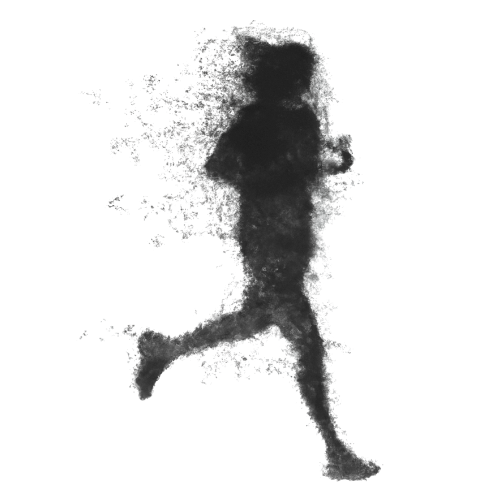PhD Thesis - Human/exoskeleton interaction
I did my PhD in the CIAMS lab - Université Paris-Saclay, from October 2017 to Jun 2022. During these 3 years and half, I studied how people interact with an actuated upper-limb exoskeleton.

I did my PhD in the CIAMS lab – Université Paris-Saclay, from October 2017 to Jun 2022.
During these 3 years and half, I studied how people interact with an actuated upper-limb exoskeleton.
The rise of actuated exoskeletons is explained by their strong potential to prevent, reduce or compensate for motor deficits. However, symbiotic interaction between the user and the exoskeleton remains challenging to achieve. This limitation is partly due to the lack of knowledge about human motor responses during interaction with an exoskeleton.
The work presented in this thesis proposes to address this issue by studying the Human-Exoskeleton Interaction at the level of the upper limb through two initial control modes with numerous concrete applications: the transparent mode (i.e. not to interfere with the user’s movement) and the antigravity mode (i.e. compensating the weight of the arm). The interaction with an exoskeleton in these two control modes induces peculiar gravito-inertial dynamics, raising fundamental questions about how users will adapt. Therefore, studying human motor strategies can provide knowledge on adaptations to these induced dynamics and serve as a basis for improving these control modes.
The results obtained show that the slowing down of movements observed in transparent mode can be explained by the lack of inertia compensation. Despite these perturbations, the participants’ nominal motor skills are preserved. These considerations then made it possible to improve transparency and to propose metrics to evaluate it. This work also shows that users of the antigravity mode can efficiently exploit the efforts provided by the exoskeleton. The studies’ results on the two control modes show that individuals manage to adapt quickly to the gravito-inertial dynamics induced by the interaction. Moreover, the behaviour they converge on seems to be broadly in line with the predictions of optimal control models in the literature.
In conclusion, the thorough study of the motor adaptation of subjects in different control modes may improve the envisaged control laws and provide metrics to evaluate the quality of the IHE.
My Thesis is written in french and can be accessed here:
- Adaptation of human motion to new gravito-inertial dynamics induced by interaction with an actuated upper-limb exoskeleton. Université Paris-Saclay, ED 566, CIAMS Lab, CEA-List. Supervision: Bastien Berret, Nicolas Vignais, Franck Geffard
Several papers have resulted from my thesis work and the work of my research team:
- Fast reoptimization of human motor patterns in non-Earth gravity fields locally induced by a robotic exoskeleton. Verdel, D., Bastide, S., F. Geffard, Bruneau, O., Vignais, N., Berret, B. bioRxiv 2022, preprint.
- Influence of the physical interface on the quality of human-exoskeleton interaction. Verdel, D., Sahm, G., Bastide, S., Bruneau, O., Berret, B., Vignais, N. IEEE Transactions on Human-Machine Systems. 2022.
- Human Weight Compensation with a Backdrivable Upper-Limb Exoskeleton: Identification and Control. Verdel, D., Bastide, S., Vignais, N., Bruneau, O., Berret, B. Frontiers in Bioengineering and Biotechnology, section Bionics and Biomimetics, 1396. 2022.
- A New Weight Compensation Model Considering Joint Misalignments Monitored by a Feedforward Impedance Control Method Applied To an Active Upper-Limb Exoskeleton. Verdel, D., Bastide, S., Vignais, N., Bruneau, O., Berret, B. Research Square, preprint. 2022.
- Improving and quantifying the transparency of an upper-limb robotic exoskeleton with a force sensor and electromyographic measures. Verdel, D., Bastide, S., Bruneau, O., Berret, B., Vignais, N. Computer Methods in Biomechanics and Biomedical Engineering, 24:sup1, S1-S325, French Society of Biomechanics. Saint-Etienne, France, 25-27 of Oct., 2021.
- An identification-based method improving the transparency of a robotic upper-limb exoskeleton. Verdel, D., Bastide, S., Vignais, N., Bruneau, O., Berret, B. Robotica, 1-18. 2021.
- Analysing human-exoskeleton interaction: on the human adaptation to modified gravito-inertial dynamics. Bastide, S., Vignais, N., Geffard, F., Berret, B. Computer Methods in Biomechanics and Biomedical Engineering, 22:sup1, S1-S393. French Society of Biomechanics, Poitiers, 28-30 of Oct., 2019.
- Interacting with a “transparent” upper-limb exoskeleton: a human motor control approach. Bastide, S., Vignais, N., Geffard, F., Berret, B. In 2018 IEEE/RSJ International Conference on Intelligent Robots and Systems (IROS) (pp. 4661-4666). Madrid, 1-5 of October, 2018.
- Analysis of human-exoskeleton interactions: an elbow flexion/extension case study. Bastide, S., Vignais, N., Geffard, F., Berret, B. Computer methods in biomechanics and biomedical engineering, vol. 20(sup1), 9-10. French Society of Biomechanics. Reims, France, 2-3 of Nov., 2017.






Comments